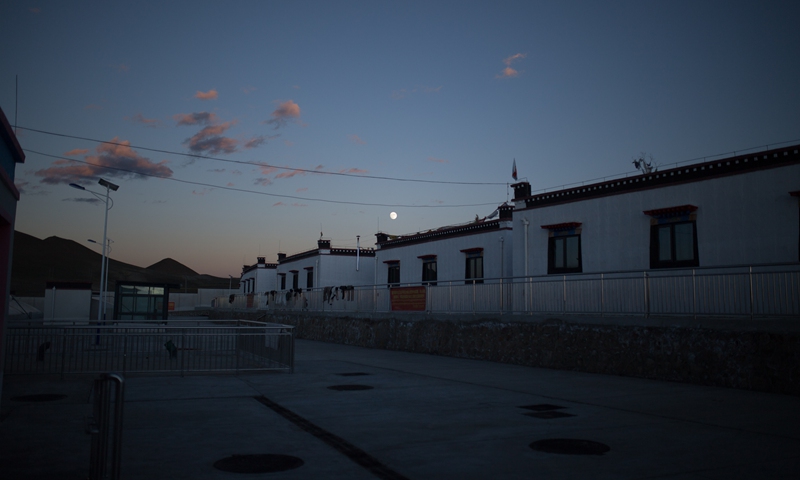Villagers in Xizang border villages refute Indian media’s hype, which experts say is a usual means to ignore India’s own problems

A well-off village in Gamba, Southwest China's Xizang Autonomous Region. Photo: Shan Jie/GT
Chinese villagers along the China-India border area in Xizang (Tibet) say they are better off than their Indian counterparts. They say it's an objective fact and a result of China's poverty eradication programs, and not meant to "lure Indian villagers." As opposed to some reports from Indian media outlets, the villages also don't "serve as additional eyes and ears" for China, the Global Times reporters visiting the border villages have found.As an important part of the aid policy for the Tibet Autonomous Region, the central government has created several Xiaokang villages (well-off villages) along the border areas. Yet, these policies to improve the lives of residents have been hyped and misinterpreted by some Indian media, and even wrongly considered as intelligence agencies.
According to a recent report published by Indian media outlet IANS quoting a forum, China's building of these 680 villages near the China-India border is meant to "lure the Indian villagers toward a better Chinese life and to serve as additional eyes and ears for Beijing."
While visiting border villages in Medog, Gamba and Yadong of Southwest China's Xizang Autonomous Region, the Global Times reporters found that the charges from the Indian media are ridiculous.
A villager of Tibetan ethnic told the Global Times that Chinese residents in border regions live a better life than their Indian neighbors. "The border regions of India are some of the country's poorest regions, but China's poverty reduction and all-round well-off society policy have brought its people better life conditions."
For instance, Gelin Village, a border village of Medog, has achieved comparatively well-off with the policies to develop border regions. The villagers increased their incomes through planting tea and fungi and keeping bees. All households have shaken off poverty.
At present, the village has formed an industrial pattern in which tea is the main product, monkey mushroom, red rice, ganoderma lucidum, honey and other tourism agricultural by-products are supplements. All households have now shaken off poverty, as the average net income of the village reached 12,531 yuan ($1,938) in 2020, becoming a famous Tibetan border well-off model village.
Experts refuted Indian media's claim that the villages are "intelligence operations to turn Indian people against India," but noted their hyping of the border issue is a way for them to divert attention away from domestic conflicts.
"India is unable to control its epidemic, and its economy is in trouble. So as the domestic problems intensify, they often entice public's attention toward the China-India border issues," Hu Zhiyong, a research fellow at the Institute of International Relations of the Shanghai Academy of Social Sciences, told the Global Times on Sunday.
Hu explained that building well-off villages in border regions and other less-developed regions is part of the central government's policy to aid Xizang, which requested assistance in order to improve the life of its people. "Indians are too sensitive. Actually, they are sensitive to all things about China. Any tiny action of China at the border regions will be exaggerated by India. This is unreasonable."
Hu also noted that India's failed management in its border region is another reason for its precaution of China. "India suffers the dissension from some of its border provinces. So they have to keep vigilant at every action of China," Hu said.

